Other Ranks Survived: The Final Release of Pension Records
- Home
- World War I Articles
- Other Ranks Survived: The Final Release of Pension Records
The final set of Pension Record Cards has just been published by our partners 'Ancestry.co.uk' on their Fold3 platform. As with all the other cards and ledgers these are freely available for WFA members via the 'library edition' on the WFA's website.
The following article is intended to give an overview of this final set of 'Other Ranks Survived' cards. There is a wide variety to the types of cards in this set, and the information provided on these cards varies greatly. A ‘typical’ card will look like this
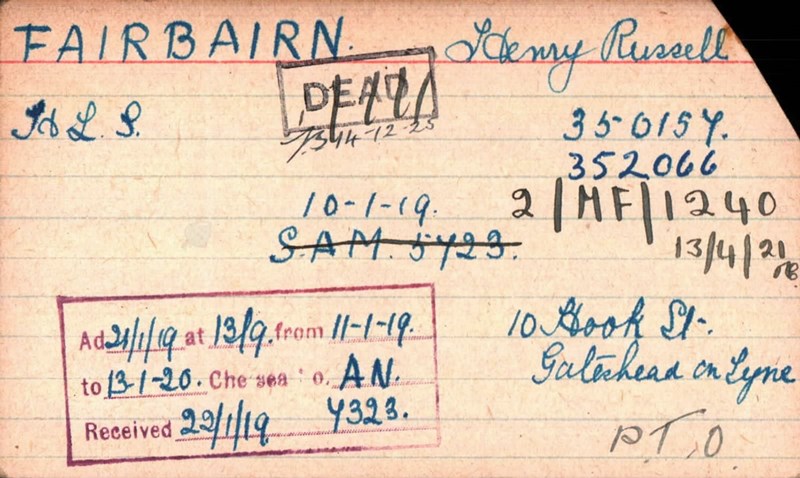
Immediately we see his address and two regimental numbers (by contrast, his Medal Index Card [below] provides only one regimental number).
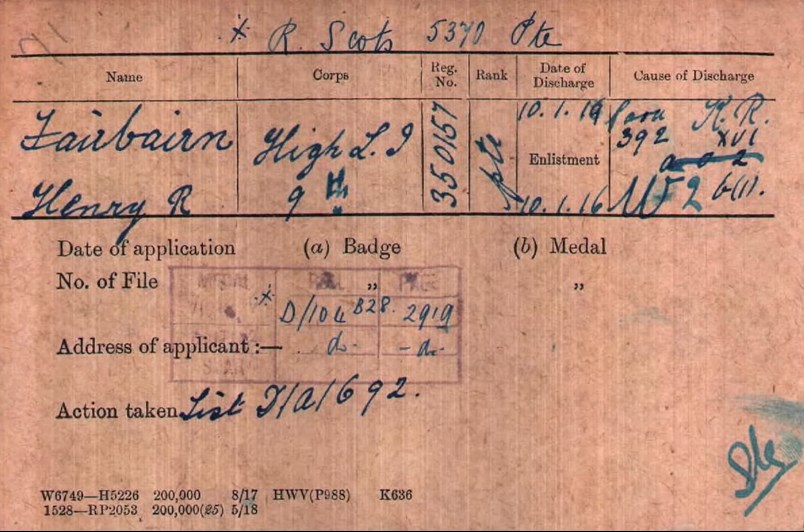 There are over 2.9 million of these cards from (alphabetically) Robert Aarenstein to Norman Zyto (whose pension claim was rejected).
There are over 2.9 million of these cards from (alphabetically) Robert Aarenstein to Norman Zyto (whose pension claim was rejected).
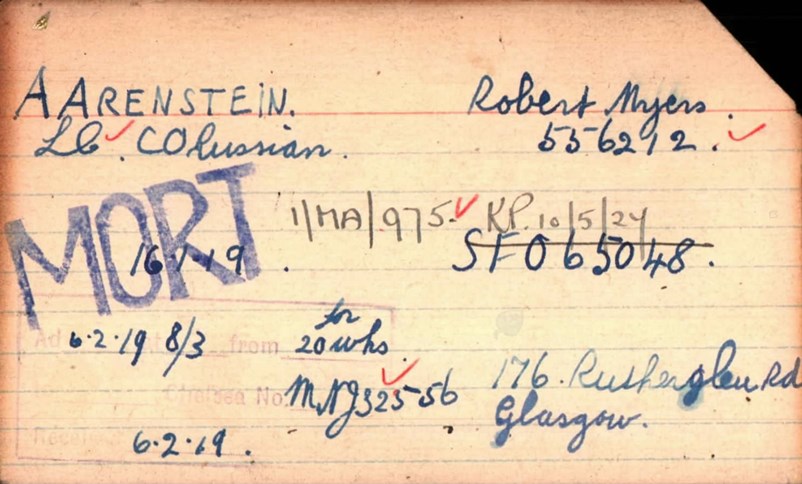
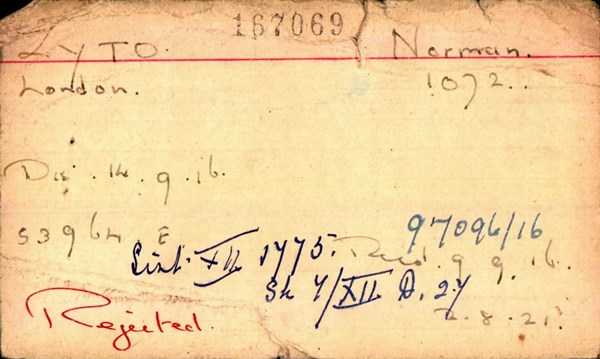
Possibly the single most important benefit in these cards being made available is the ability they provide to ‘positively identify’ individual servicemen. If, for example, you believed Great Uncle 'John Smith' served in the war and family legend or photographs suggest he served in the artillery, without further information it would be almost impossible to track down which ‘John Smith’ you are looking for. The MIC for this John Smith being one of hundreds that give no clue.
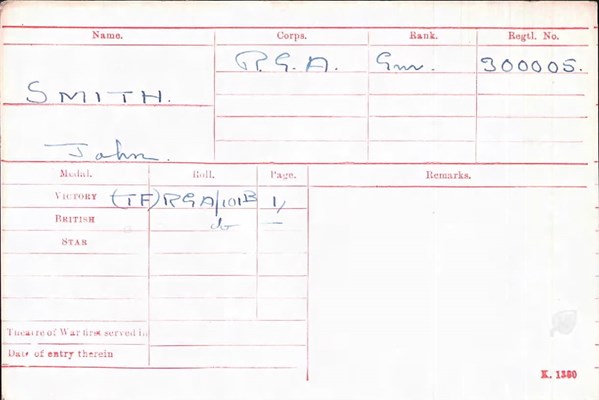
However if you know that 'Great Uncle John' lived in Tarbert, Lock Fyne the card below enables you to positively identify the correct ‘John Smith’ and potentially take your research further as you now know his regimental number and that he was in the RGA.
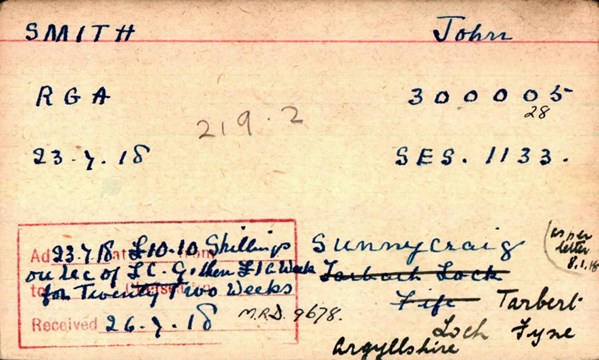
Just occasionally there are, on these cards, details that show medical conditions. There are often seen the words ‘Mental Case’ or, in the two examples below, ‘Admitted to Asylum’.
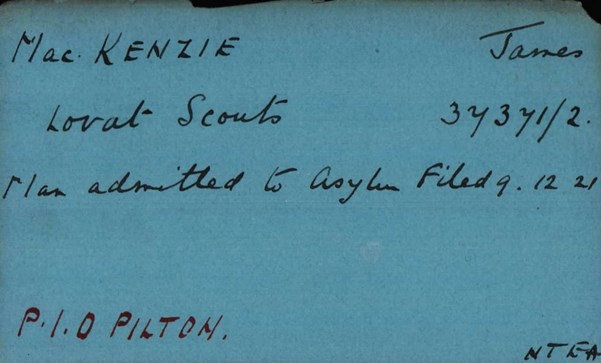
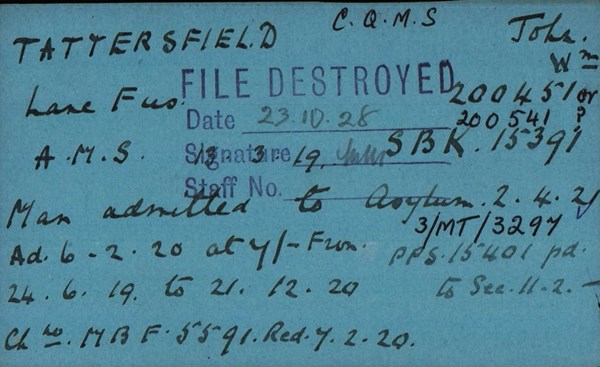
Another McKenzie, this time Donald, serves as a (rare) example of the naming of a widow and shows the cards were in use as recently as the mid-1970s.
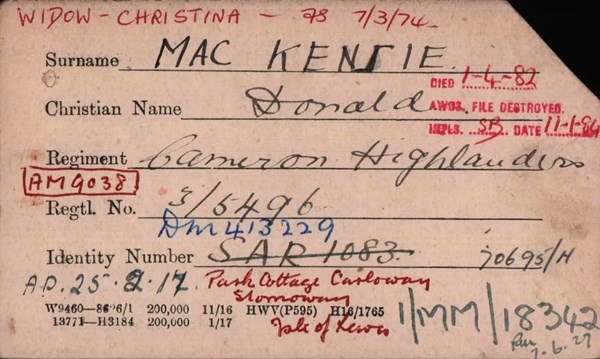
And again for George Barnett we have this card which has an indication of their use in the late 1980's
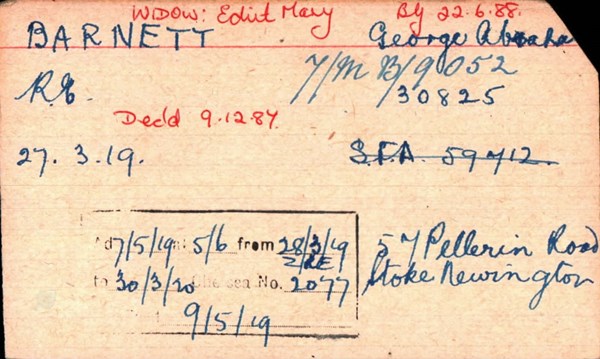
There is a 'modern' card for the above individual which shows the cards being used by the DHSS.
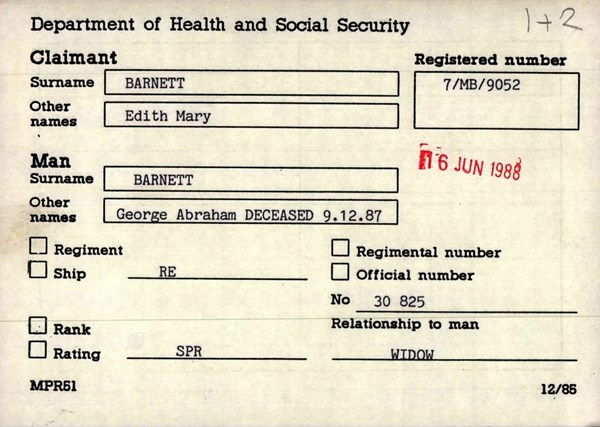
There are a range of reference codes typically shown on these cards. An example of this is the card for William Aplin (who served in the Training Reserve and for some reason was therefore eligible for a pension). Recent research has provided clues as to some of these codes. See the article here: How Reference numbers were used in WW1 Pension claims at Chelsea and in the Pension Issue Office
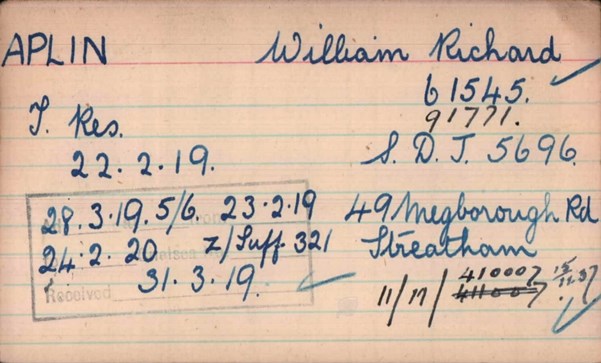
Sometimes the spelling of the man’s name may be cross referenced either to an Alias, or an ‘alternative’ spelling. We have an alias here for Riley /Kilkenny. There is a lot more about this particular soldier here: A Worthless Scamp’: The Great War of Vincent Riley
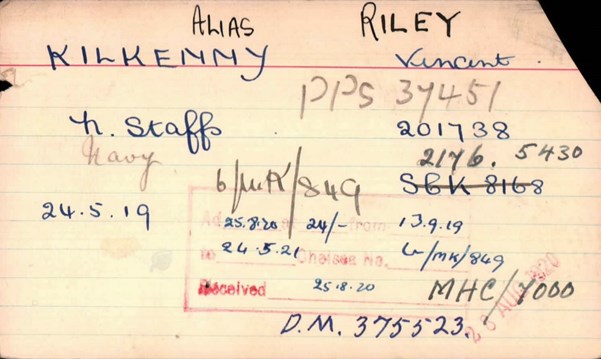
And an alternative spelling for Maynerd/Maynard
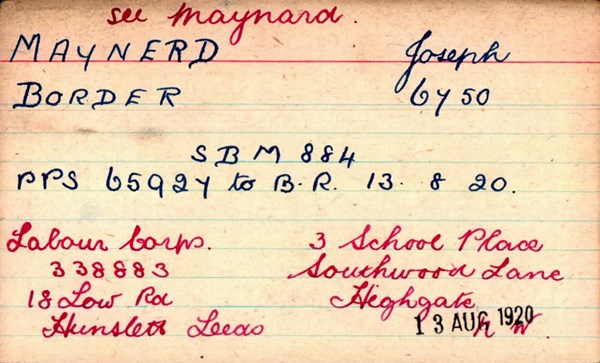
Some of the cards are of men whose names are familiar. Here is the card for the murderer John Reginald Christie (of ‘Rillington Place’ infamy).
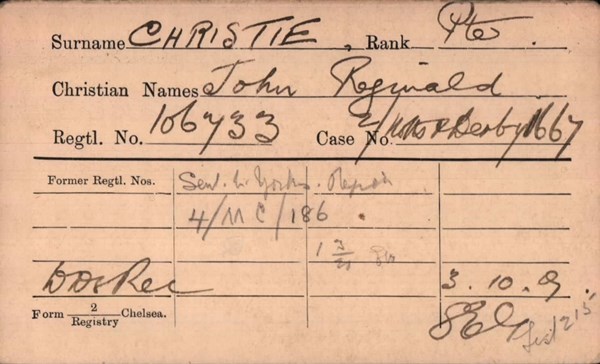
The coding (4/MC/186) points to his ledger which is shown below. (The images are not to scale).
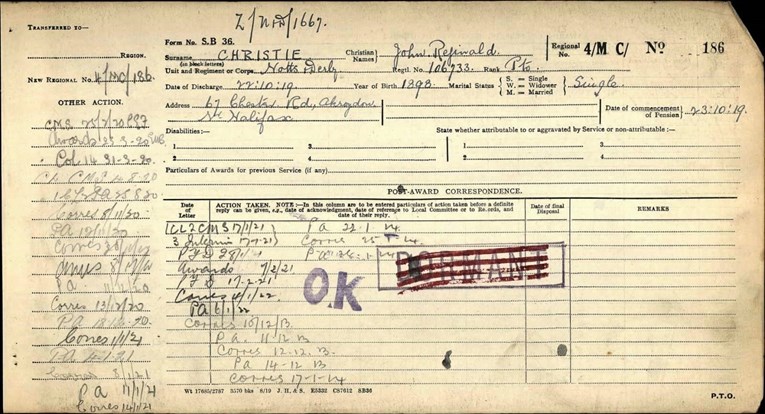 This article has not detailed the ledgers but it should be noted that these 'Other Ranks Cards' closely correlate to the Ledgers which are detailed in this article
This article has not detailed the ledgers but it should be noted that these 'Other Ranks Cards' closely correlate to the Ledgers which are detailed in this article
Understanding The Ledger Indexing
The regimental details on these cards is helpful. We have Cecil Arthur Cox of the Royal Defence Corps.
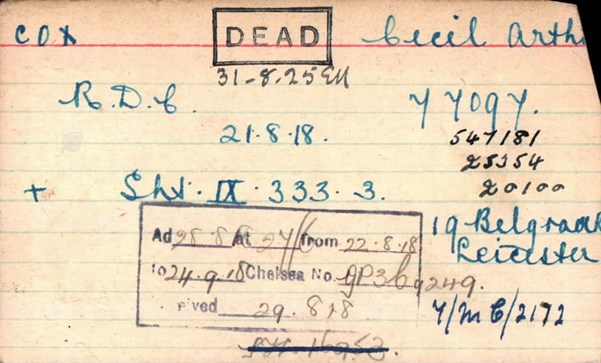
And John Daley of the Royal Irish Regiment (5967), The Royal Inniskilling Fusiliers (2364) and the Royal Irish Fusiliers (29146). That he served in other regiments is not evident from his MIC
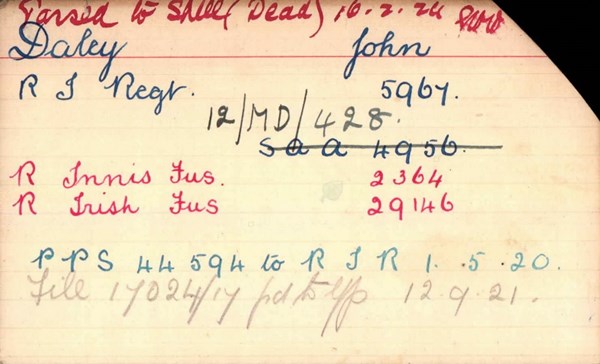
Harold Oates seems to have had quite a number of regiments in his army career which may open up research possibilities.
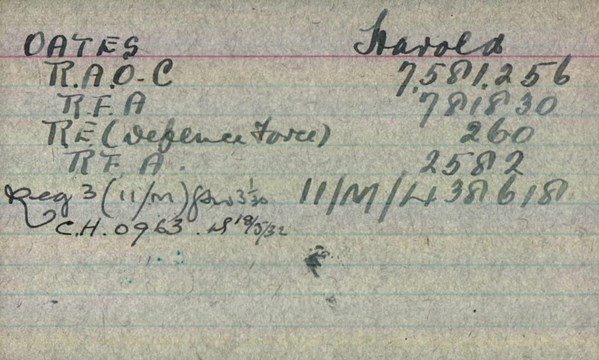
Sometimes the cards may give clues as to alternative names. Did Jesse Tregortha – who lived in Navigation Street, Burslem – have the middle name Bugan or Bryan? But the mystery is clarified or compounded by the existence of a second card naming Fregortha. All this is revealed by using the regimental number as the search criteria.
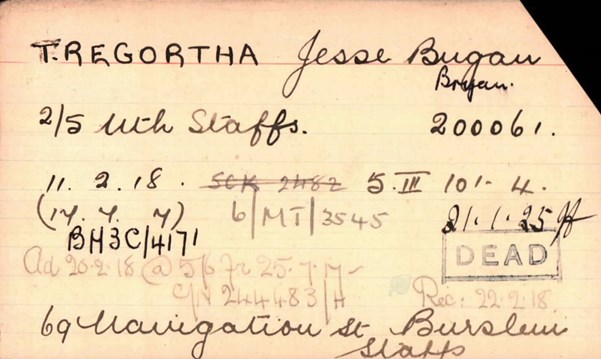
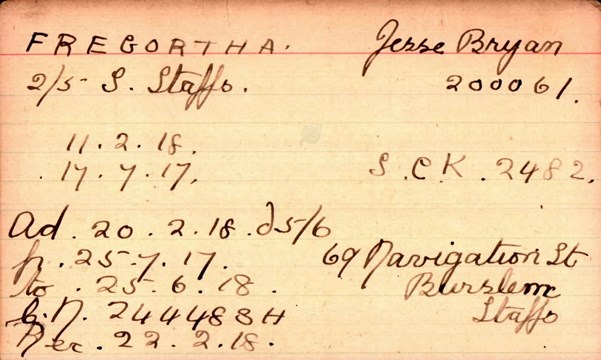
Tregortha/Fregortha is an unusual name, but there are others within the 2.9 million cards which are also somewhat uncommon, for instance Constantine Triantaphyllidis suggests someone of Greek heritage. His card reveals – as many of the cards do – the pension awarded. In this instance of 5 shillings and 6d a week from 27 November 1918 to 25 February 1919.
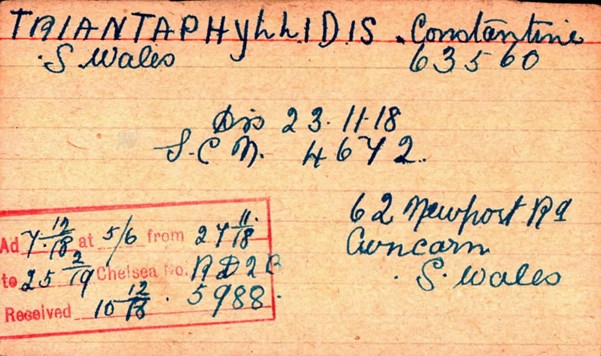
Surprisingly there are cards of men from the Egyptian Labour Corps. Admittedly these are very few in number, but Mohamed El Mahdi seems to have been dealt with by the War Office rather than Ministry of Pensions. What the story is here will probably never be known.
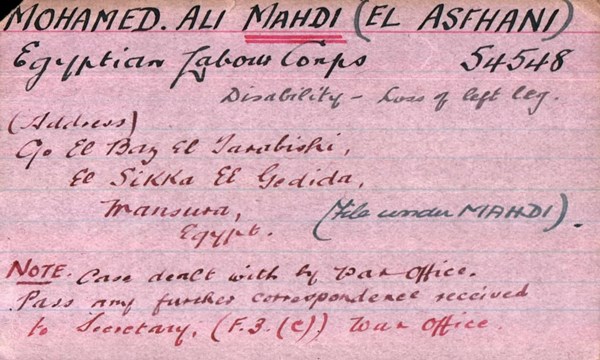
Other ‘exotic’ units include HK&S RGA: the Hong Kong and Singapore Royal Garrison Artillery.
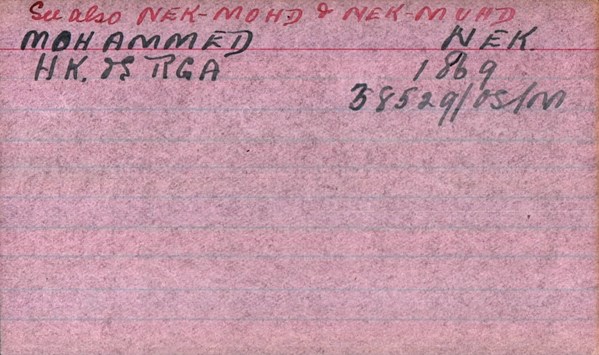
The appearance of a soldier (Norman Smith) from a Boer War Unit is perhaps one of the most surprising matters that have been found so far, but there will no doubt be other surprises within these cards.
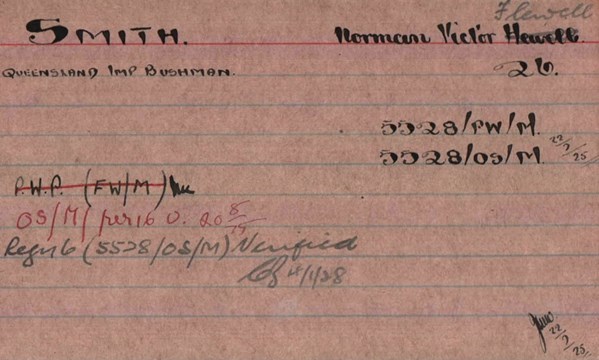
As explained in other articles, the South African pensions seem to have been administered by the British – as shown with this card for another "Smith", this time George Smith.
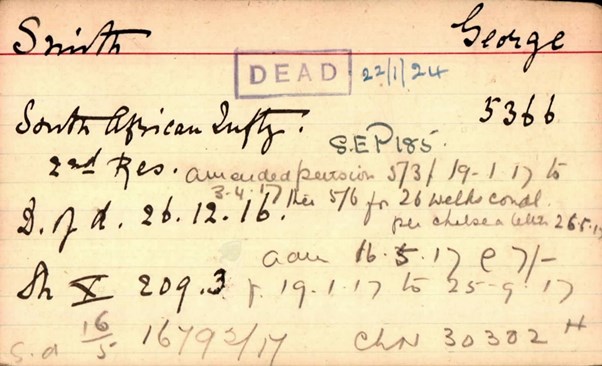
An exercise will soon be undertaken to try to identify the cases of men whose names have been mistagged. These are rare and the tagging is highly accurate, and is usually due to poor handwriting on the cards. Patrick Nykviot has been mistagged as ‘Mykviot’.
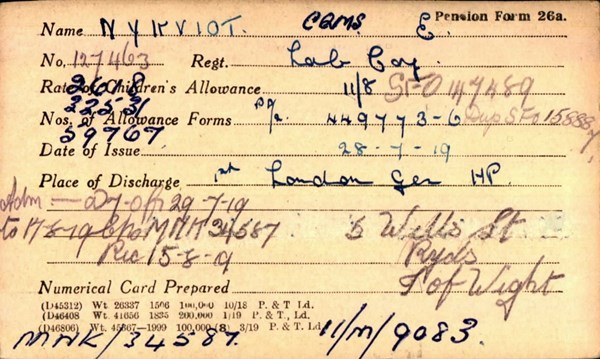
The correction process for this will soon start and if members wish to volunteer for this or other pieces of work around these cards, especially during lockdown please get in touch via pensionrecords@westernfrontassociation.com
We have unusual units which are of interest, such as for William Charles Wood of the 'Yeomanry Cyclist Hussars'.
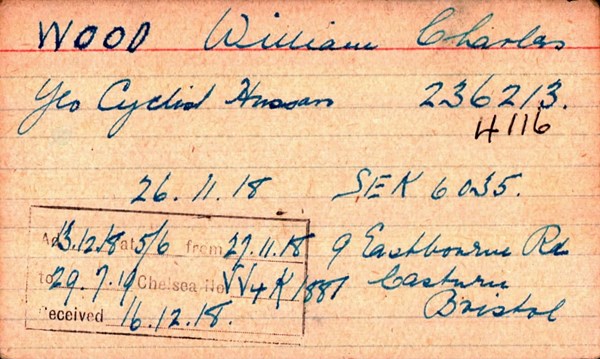
In many of the cases the top corner of the card has been ‘snipped off’ as shown with Joseph Walker’s card. This is likely to have been when the pension ceased (the card is marked ‘DEAD’).
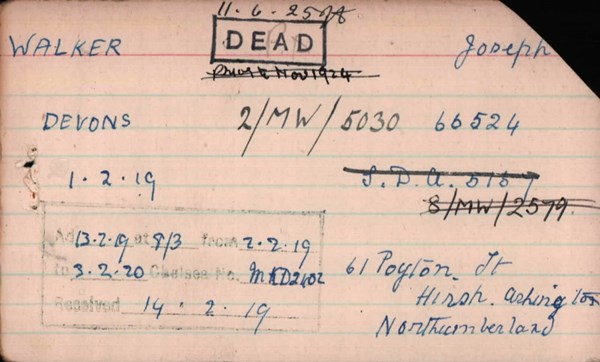
But the card for Walker is one that reveals far more. A further card is attached to this record which shows a grant was paid for him to start a business.
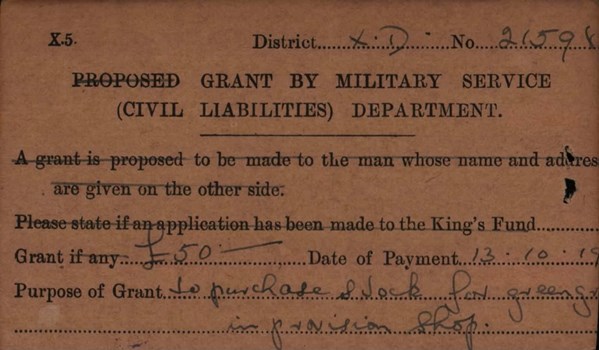
Although not common, these examples do crop up reasonably frequently within the cards that have been digitized. These grants by the Military Service (Civil Liabilities) Department were typically for sums between £20 and £50 (£1000 and £2500 in today's money). Another example of this is here with the card for Alfred Ellis.
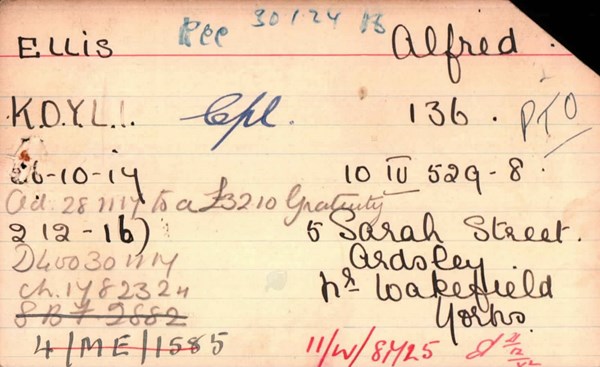
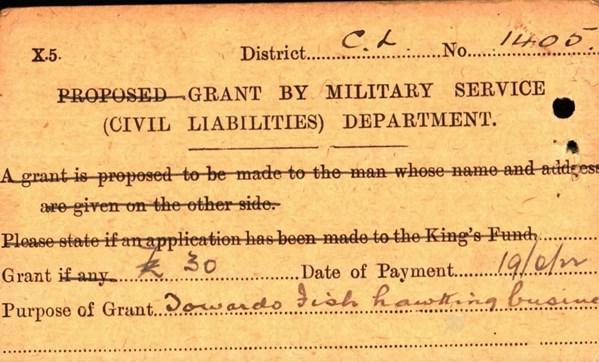
Further articles highlighting what can be found on this set will be published soon.
Article by David Tattersfield, Vice-Chairman, The Western Front Association





